Related Research Articles
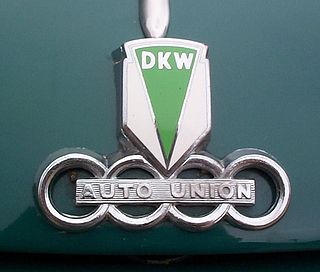
DKW is a German car and motorcycle marque. DKW was one of the four companies that formed Auto Union in 1932 and is hence an ancestor of the modern day Audi company.

Monocoque, also called structural skin, is a structural system in which loads are supported by an object's external skin, similar to an egg shell. The word monocoque is a French term for "single shell" or "single hull".

The Ford Model T is an automobile produced by Ford Motor Company from October 1, 1908, to May 26, 1927. It is generally regarded as the first affordable automobile, which made car travel available to middle-class Americans. The relatively low price was partly the result of Ford's efficient fabrication, including assembly line production instead of individual handcrafting.

The interurban is a type of electric railway, with streetcar-like light electric self-propelled railcars which run within and between cities or towns. They were prevalent in North America between 1900 and 1925 and were used primarily for passenger travel between cities and their surrounding suburban and rural communities. Large networks have also been built in countries such as Japan, the Netherlands, Belgium and Poland, many of which survive to the present day. Interurban as a term encompassed the companies, their infrastructure, and the cars that ran on the rails.
Bound or bounds may refer to:

Longbridge plant is an industrial complex in Longbridge, Birmingham, England, currently leased by SAIC as a research and development facility for its MG Motor subsidiary. Vehicle assembly most recently stopped in 2016.
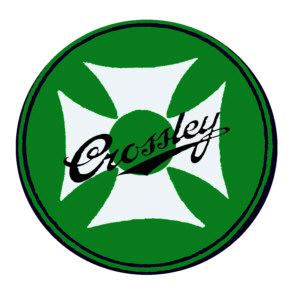
Crossley Motors was an English motor vehicle manufacturer based in Manchester, England. It produced approximately 19,000 high-quality cars from 1904 until 1938, 5,500 buses from 1926 until 1958 and 21,000 goods and military vehicles from 1914 to 1945.
The Lanchester Motor Company Limited was a car manufacturer located until early 1931 at Armourer Mills, Montgomery Street, Sparkbrook, Birmingham, and afterwards at Sandy Lane, Coventry England. The marque has been unused since the last Lanchester was produced in 1955. The Lanchester Motor Company Limited is still registered as an active company and accounts are filed each year, although as of 2014 it is marked as "non-trading".

Excelsior, based in Coventry, was a British bicycle, motorcycle and car maker. They were Britain’s first motorcycle manufacturer, starting production of their own ‘motor-bicycle’ in 1896. Initially they had premises at Lower Ford Street, Coventry, and 287-295 Stoney Stanton Road, Hillfields, Coventry, Warwickshire before moving to Kings Road, Tyseley, Birmingham in 1921.

The Austin 7 is an economy car that was produced from 1923 until 1939 in the United Kingdom by Austin. It was nicknamed the "Baby Austin" and was at that time one of the most popular cars produced for the British market and sold well abroad. Its effect on the British market was similar to that of the Model T Ford in the US, replacing most other British economy cars and cyclecars of the early 1920s. It was also licensed and copied by companies all over the world. The very first BMW car, the BMW Dixi, was a licensed Austin 7. In France they were made and sold as Rosengarts, and in the United States they were built by the American Austin Car Company. In Japan, Nissan also used the 7 design as the basis for their first cars, although not under licence. This eventually led to a 1952 agreement for Nissan to build and sell Austins in Japan under the Austin name.
The Calthorpe Motor Company based in Bordesley Green, Birmingham, England made a range of cars, motorcycles and bicycles from 1904 to 1932.

The FAI(Ford-A Izhorskiy) armoured car was a replacement for the D-8 armoured car, used by the Soviet Union from the early 1930s to early 1940s.

The Leyland Eight was a luxury car produced by Leyland Motors from 1920 to 1923.
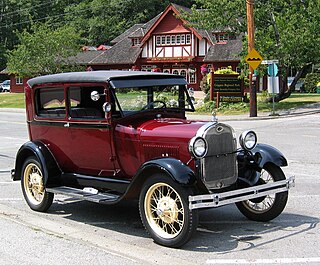
The Ford Model A was the Ford Motor Company's second market success, after its predecessor, the Model T. First produced on October 20, 1927, but not introduced until December 2, it replaced the venerable Model T, which had been produced for 18 years. This new Model A was designated a 1928 model and was available in four standard colors.
Grahame-White was an early British aircraft manufacturer, flying school and later manufacturer of cyclecars.
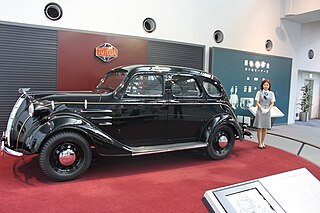
The A1 was the first prototype passenger car built by the company that became Toyota. It was redesigned and put into production as Toyota's first production cars, the AA sedan and the AB cabriolet. These were succeeded by the similar AE, AC and BA sedans.

A car is a wheeled motor vehicle used for transportation. Most definitions of cars say that they run primarily on roads, seat one to eight people, have four tires, and mainly transport people rather than goods.
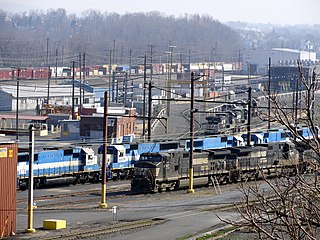
Enola Yard is a large rail yard located in East Pennsboro Township, Pennsylvania, along the western shore of the Susquehanna River at Harrisburg, Pennsylvania.
The Cambro was a very basic British three-wheeled, single-seat cyclecar made in 1920 and 1921 by the Central Aircraft Company of Northolt, Middlesex.

H. C. S. Motor Car Company was a short-lived Indianapolis, Indiana, automobile manufacturer. It may have built as many as 3,000 cars between the summer of 1920 and 1926, when its doors were closed by its creditors.
References
- 1 2 Georgano, N. (2000). Beaulieu Encyclopedia of the Automobile. London: HMSO. ISBN 1-57958-293-1.
- ↑ Baldwin, Nick, "A-Z of Cars of the 1920s", Bay View Books, Bideford, Devon, 1998 ISBN 1-901432-09-2